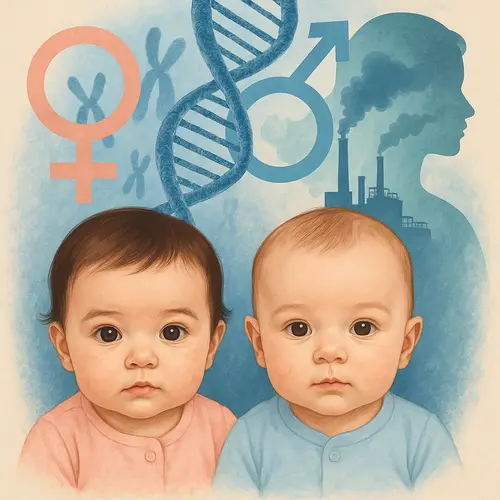Understanding Baby’s Gender—Not Just a Coin Toss!
For generations, many believed that a baby’s gender was simply a matter of luck, a random 50-50 chance. However, recent scientific breakthroughs are challenging this notion. Today, baby’s gender is understood as a complex outcome influenced by a combination of genetic, biological, and even environmental factors. Families across the globe are discovering that welcoming a boy or a girl may not be just a roll of the dice, but rather a pattern hidden in their genetics, maternal age, and family history.
Thanks to extensive research conducted by Harvard scientists and published in leading scientific journals, we now know that the story of baby’s gender is far richer and more intricate than previously thought. This new understanding not only transforms how we see the birth of each child but also opens up fresh possibilities for future research, health planning, and even family expectations.
The Science Behind Baby’s Gender
The long-held theory that baby’s gender is determined purely by chance—a perfect coin toss—has been overturned by large-scale studies. A landmark research project analyzed more than 146,000 pregnancies from families around the world, with special focus on detailed data from the Nurses’ Health Study in the United States. These studies found clear evidence of recurring gender patterns within certain families—such as families with all boys or all girls—that simply could not be explained by random chance alone.
For example, if you already have two or three children of the same sex, the probability that your next baby will share that sex rises above the classic 50% expectation. This insight adds a fascinating layer to the experience of growing families and invites us to rethink what truly influences baby’s gender.
Key Factors Influencing Baby’s Gender
Recent research highlights several critical factors:
- Maternal Age: Women who begin having children after age 28 are statistically more likely to have children of the same sex. Scientists believe that biological changes—such as increased vaginal acidity—may play a role by affecting the survival of male (Y chromosome) sperm.
- Genetic Patterns: Cutting-edge studies have uncovered two specific genes that appear to be linked to families consistently having only boys or only girls. The exact function of these genes is still a mystery, but their existence challenges old assumptions about gender determination.
- Siblings’ Sex: The sex of previous children in a family seems to influence the baby’s gender. Families with three daughters are more likely to have a fourth daughter (58% chance), while families with three sons have a 61% chance of another boy.
- Family Trends: These patterns have been seen throughout history and even in famous families and literature, showing that family-specific gender trends are not as rare as once believed.
Debunking the 50-50 Myth
Harvard Professor Jorge Chavarro explains that, contrary to old beliefs, the probability of having a boy or a girl is not the same for every birth. His research demonstrates that families are not always dealing with a “clean slate” for each child, and the odds can shift based on prior children’s sexes. This means that the gender of your next baby is subtly influenced by your family’s unique history—something far more interesting than a simple coin flip!
Moreover, these findings align with other major studies in Europe and have sparked discussion among leading geneticists. While the classic view held that each new birth was an independent event, the evidence now shows that nature’s rules are a little more complex, and sometimes a family’s gender streak is statistically significant.
What About Other Factors?
Beyond genetics and maternal age, researchers are now turning their attention to other possible influences on baby’s gender. There is growing interest in how lifestyle choices, nutrition, exposure to environmental chemicals, and even stress might affect gender outcomes. Although there is no conclusive evidence yet, future research will explore whether these factors can tip the scales for some families.
It’s also important to note that while genetics and maternal age are strong predictors, they do not guarantee a specific outcome. Many variables are still at play, and nature maintains a certain element of unpredictability in every pregnancy.
Conclusion: A Complex Story
In summary, the days of believing that baby’s gender is determined purely by chance are over. A wealth of new evidence points to the roles of genetics, maternal age, and family patterns, each subtly shaping the likelihood of having a boy or a girl. This growing body of knowledge not only enriches our understanding of human biology but also empowers families to make sense of their own unique stories. As scientists continue to unlock the mysteries behind baby’s gender, we can look forward to even deeper insights in the years ahead.
The following posts may interest you
Pregnancy Weight Gain: Insights and Strategies
The Ultimate Guide to Pregnancy Sleep: Tips and Solutions
Source
Biological sex at birth isn’t random, study finds

